As we enter spring three of five to set up of our new garden, I see glimmers of ideas coming together. Narcissus ‘Thalia’ is probably my favourite daffodil, I add it to every design. I added a small number in year one here but they turned out to be a similar but incorrect cultivar. Last spring I added a lot more from Peter Nyssen and this is the ‘Thalia’ that I know. It’s not only the colour, the shape of the flower and leaves are why I love it. They’re concentrated in the centre of the garden for now because on the outside there are big patches of ground elder and three cornered leek. Two plants I like but left to their own devices will take over the entire garden, spreading into the wild areas beyond, reducing the diversity of everything. This summer I plan to make a real attempt to dig out as much of these two troublemakers as I can. In the meantime, the ‘Thalia’ will now multiply vegetatively and by seed, increasing in number every year.
This week I am resorting to extreme security measures to an unforeseen threat in the polytunnel. A wren has discovered a loophole in the poly protection by breaking in through a tiny gap at the top of the doors. When my back is turned, the tyrant attacks. Zipping in and nabbing all of the seeds I’ve sown, leaving tiny holes where their beak has swizzled around. I guess I should at least thank them for the perfect seed depth dips, leaving the trays prepped for a second course.

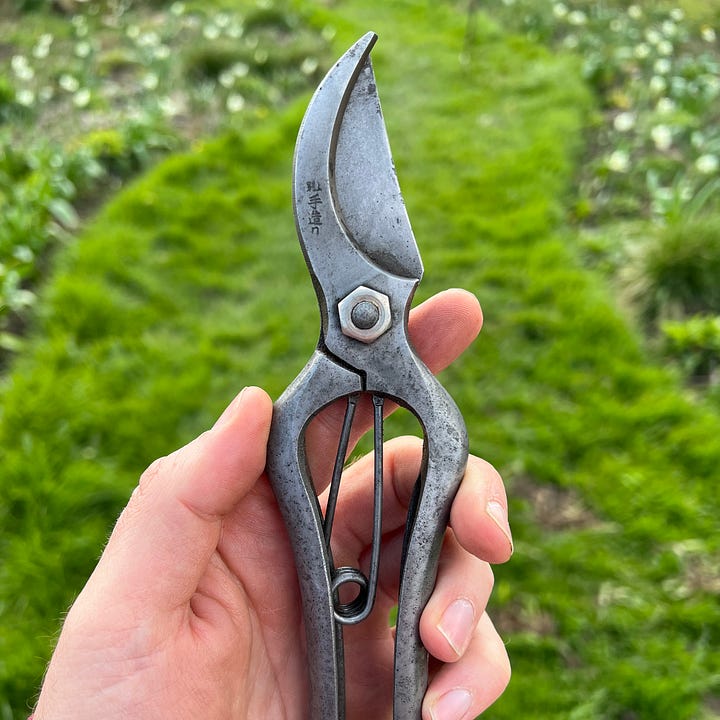
Last year during a photoshoot for Gardener’s World Magazine I lost my favourite pair of secateurs. To my delight, I found them again this week as I cleared last year’s kale. Like an archeological dig, as one Twitter follower put it. They were covered in rust and I set about cleaning them up.
How to clean rusty tools
Soak overnight in white wine vinegar - most rust will float off
Rinse with water and rub with a cloth - to remove loose rust and dry fully immediately
Use fine wire wool or rust eraser block (called a Creanmate by Niwaki) - to gently rub off remaining rust
Sharpen - using #1000 grit sharpening stone
Add Camellia oil - to joints and lightly rubbed all over with a piece of kitchen paper - to protect from further corrosion
Overall I’m pleased with the end result, the secateurs are pretty much good as new and certainly entirely functional. There are some small corrosion marks, particularly to the outside of the large cutting blade but this is cosmetic and I like these characterful blemishes. You can follow the above technique for returning any rusted tool back to its former glory. If you read all of that sniggering about rusty tool talk, get to the back of the class.
Speaking of Gardeners’ World Magazine, the May issue is out now (no sign of the secateurs here I note) and I’ve increasingly filled my new column in the mag with tips on reducing time and effort on the veg plot while increasing yield. But the most important thing about the above photo is, look how delicious our leeks and purple sprouting broccoli are! I’m very pleased with both this year. I’ve sown next year’s leeks into a seed tray and will be sowing the broccoli again soon too.
Yum.
I’m not going to even try to hide it, I am really proud of our winter salad leaves this year - forget how they taste for a second, look how delicious they are to look at! These are the varieties listed in A Greener Life that I grow most winters (if you’ve read the book and enjoyed it, please can I ask a favour for you to write a review online? I hate asking but we live in a world where online reviews make a big difference to the success of books.) I set myself a challenge a few years ago to grow year-round lettuce and I’m pleased that last year we managed it. In peat free compost, organically, in a few metres of soil and with only a couple of hours a week around a full time job. It can be done.
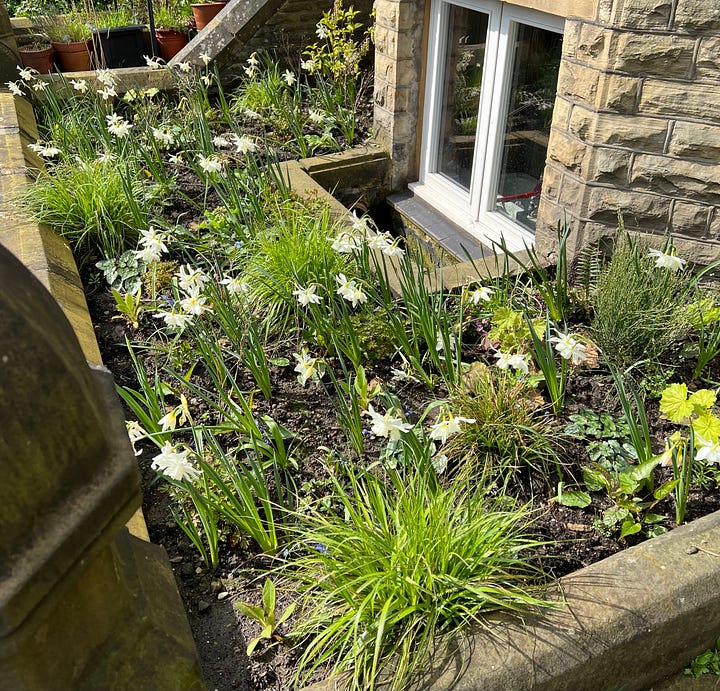

I thought I’d share two designs in progress. On the left is a miniature front garden in Hebden Bridge planted last autumn and starting to fill out. On the right is a garden planted two weeks ago, it’s already noticeably filling out in person. Both should look quite full this year, looking fully established next summer.
Taraxacum officinale, the dandelion, which you’ll see used by a large number of different bee species and butterflies. This week I saw the first peacock butterfly on one. If you follow my lazy lawn advice they will flower all summer but you’ll cut the seed heads off so they won’t spread.
Down in the wilder garden beneath our main garden, the grass areas, which I’m treating like a mini meadow, are growing around the paths as we reach peak daffodil.
There are lots of different types of daffodils in our garden planted by previous owners and one of my favourites is this unknown variety. Kate Elliot, head gardener of Columbine Hall, suggested they might be ‘Beth’s Flame’ and I think that is extremely likely judging by photos. I’ve dead headed them because…
… I dug them out of the patch of ground elder to pot up and grow on until they go dormant because I am about to start a major dig out of all the ground elder from this area. I deadheaded them to force all energy into the bulb after this shock mid growth - it’s not a good time to move bulbs. I’m doing this because I want to spread this daffodil around the garden but only once I am 100% sure there are no ground elder roots hiding among the bulbs.
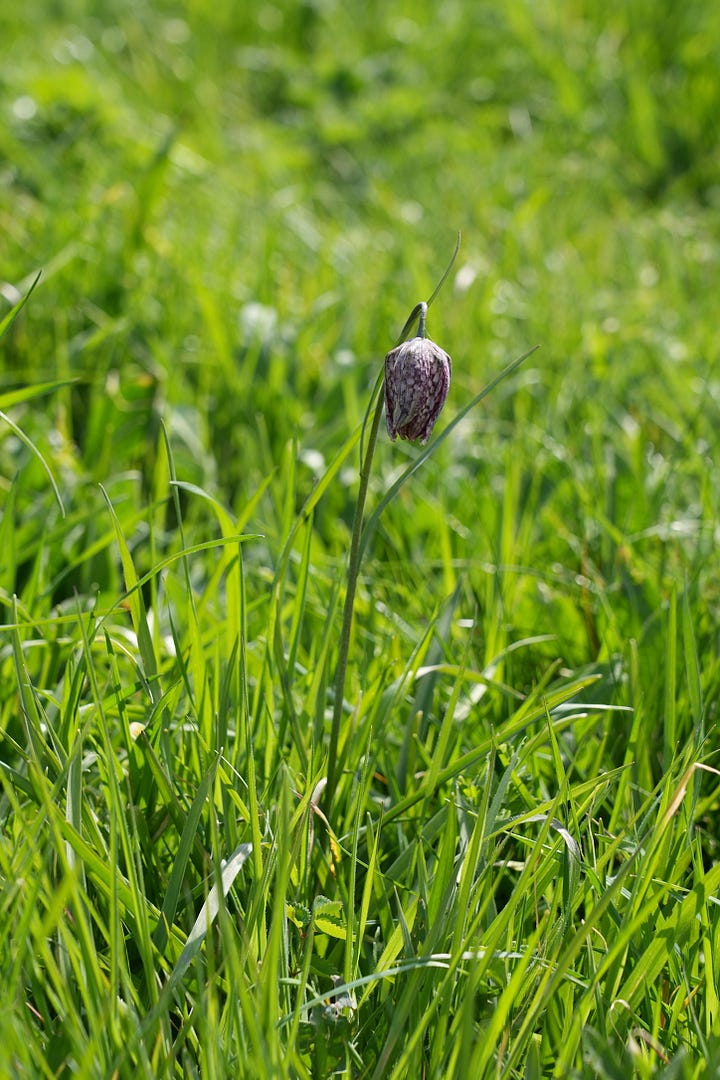
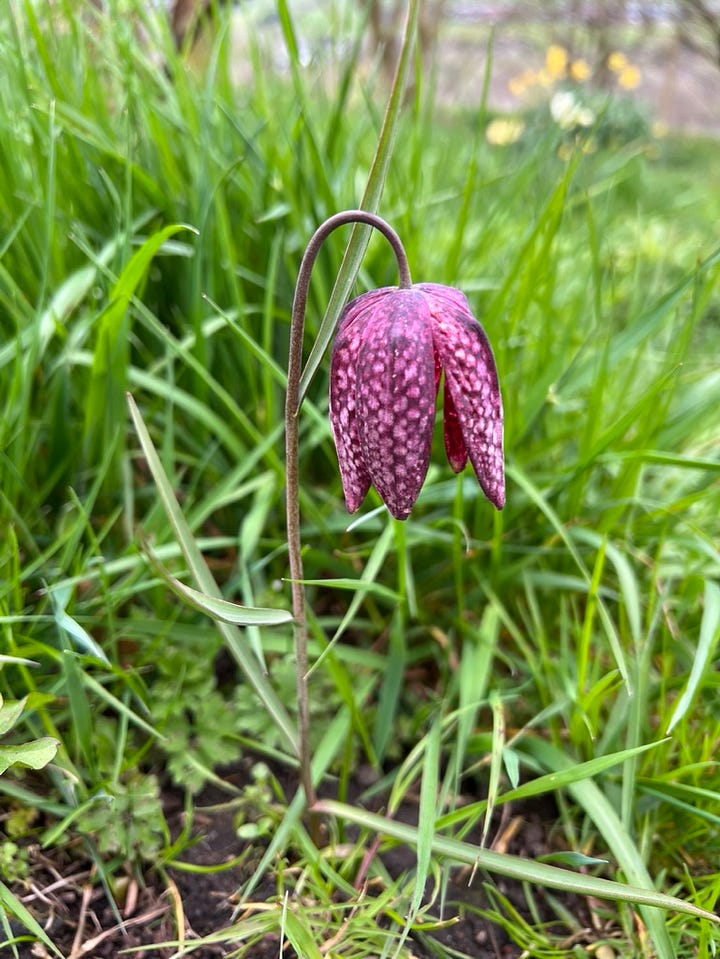
This week I went to visit a growing colony of Fritillaria meleagris, the wild snakeshead frittilary (left photo). It’s one of my favourite wild flowers and I’ve added a number of new plants to our garden over the last couple of years (right photo). There were two here already and I wanted to boost the numbers a little. I expect them to multiply in future.


In the left photo you can see an area at the top of the garden I’ve cleared of nettles and three cornered leek, I’m going to plant this up soon. On the right, I hard pruned the privet hedge at the top of the garden in autumn and although this looks brutal, this is one species that can handle it. If you look closely, it is shooting all over and will soon be green again.
Guttation on some Monarda divisions I’m growing. This is when some plants expel excess water through the ends of leaves, you see it a lot at this time of year when there’s a lot of moisture in the ground and air.
I got excited when I saw wild strawberry yesterday but of course I was fooled by the barren strawberry! Potentilla sterilis. The notch in the petal gave it away for me. My loss of fruit is wildlife’s gain.
Our chickens have been kept undercover in their run all winter to protect them from avian bird flu, which is the global pandemic only chicken owners are aware of right now. This week Flockdown was lifted and it was so lovely seeing how happy they were to be out. They think of me as a giant cockerel (not the only ones I guess) and follow me about hoping I’ll just join their crew to hang out all day.
It’s been an eventful week now the garden is growing rapidly, have a lovely weekend!



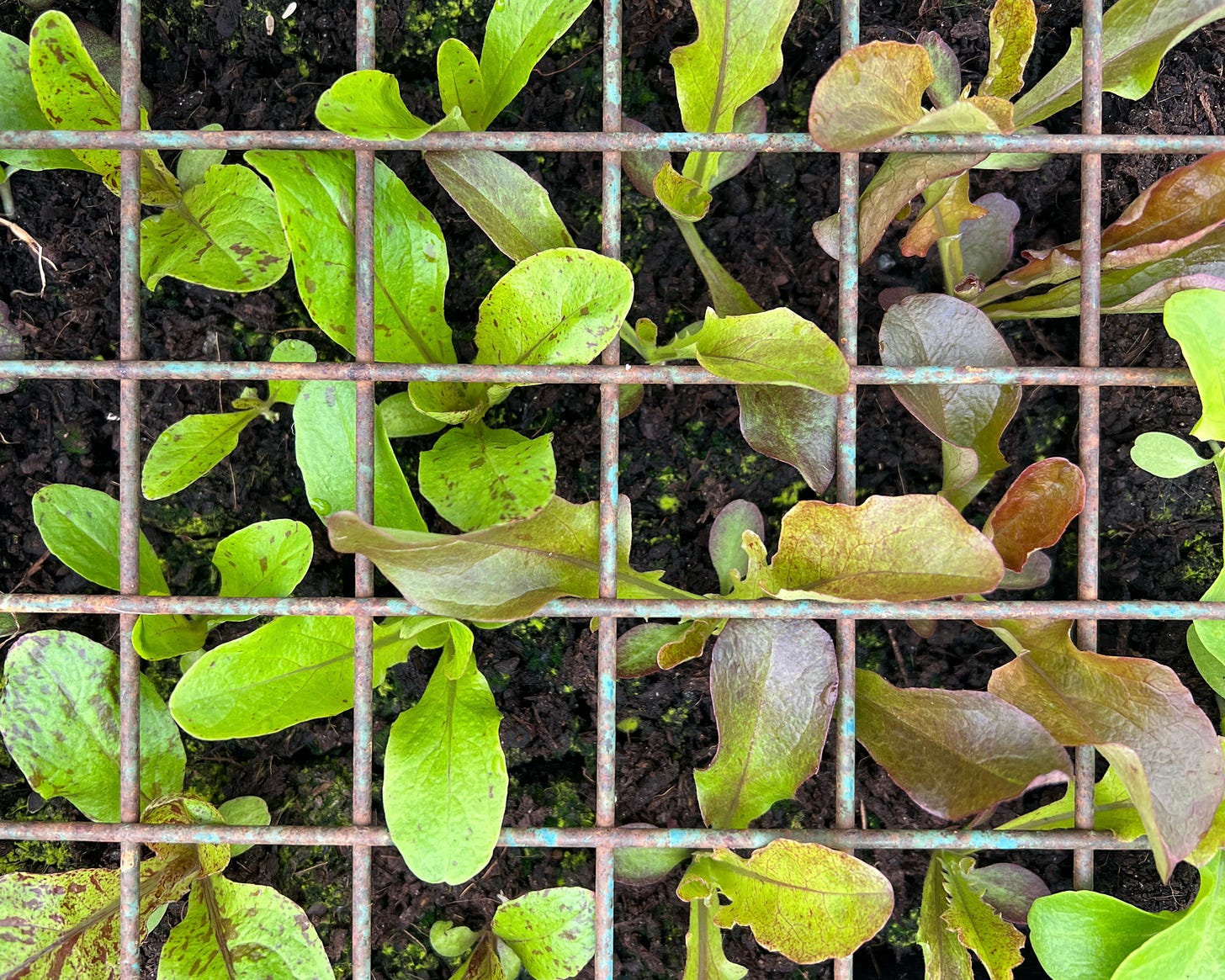
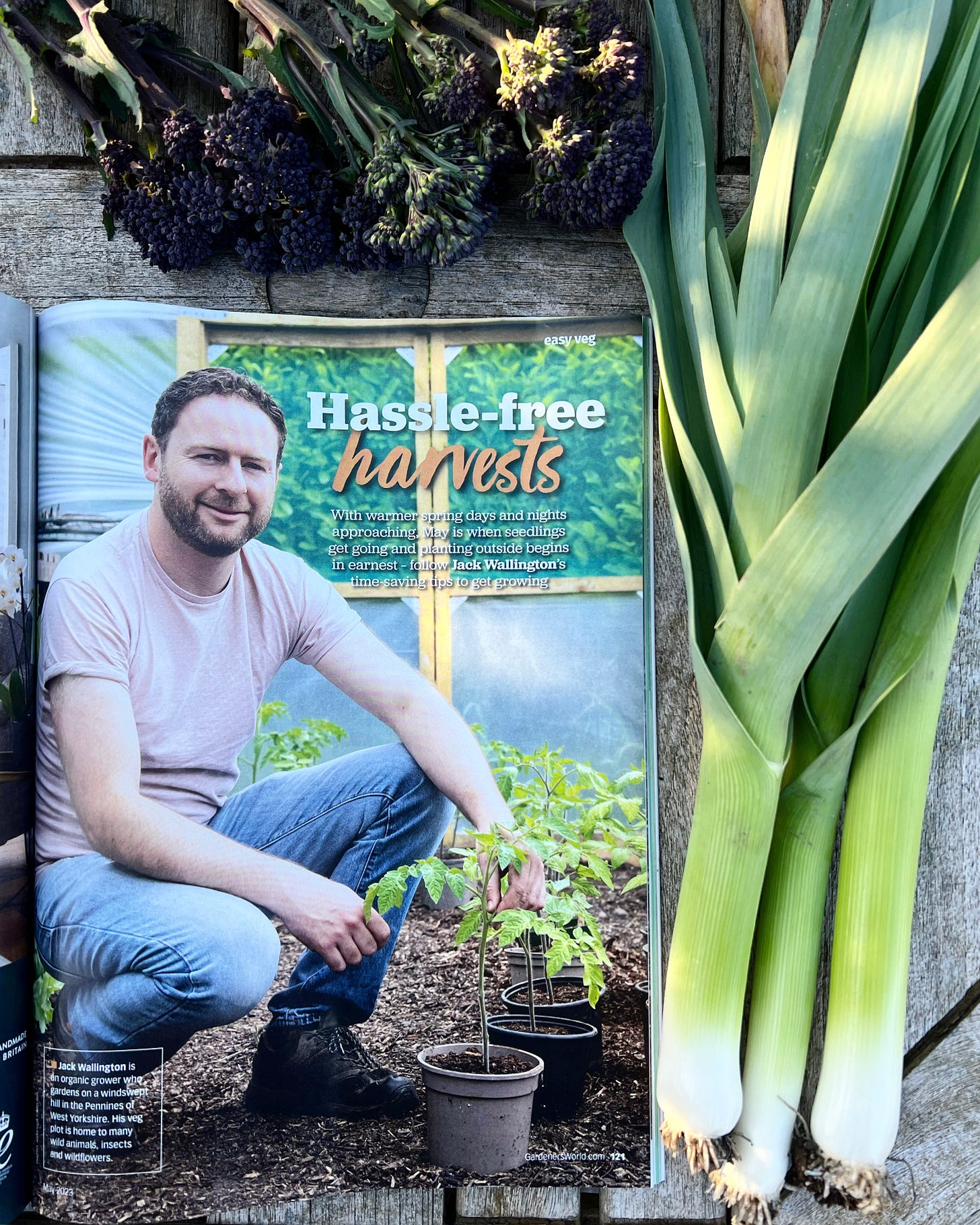

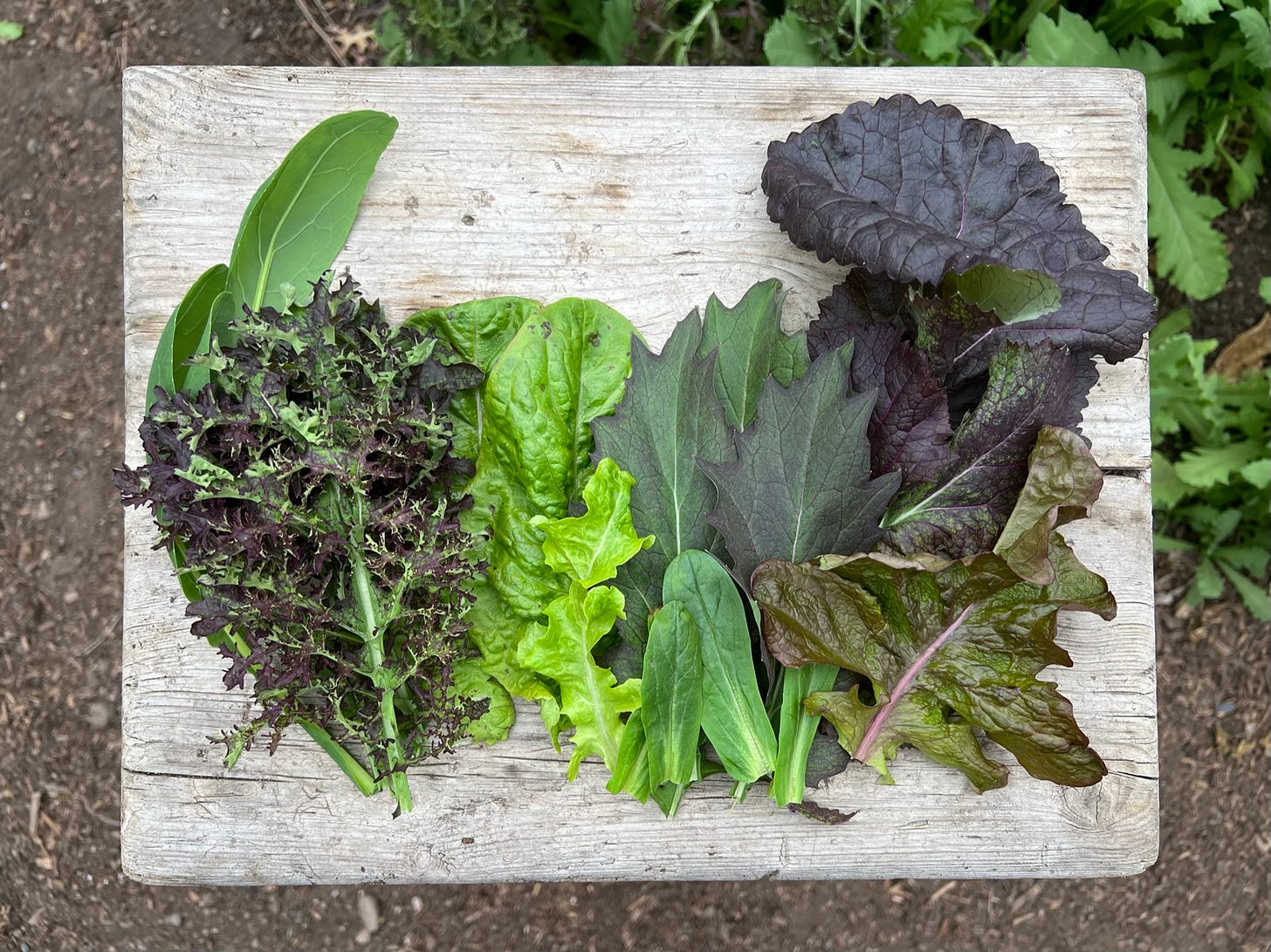

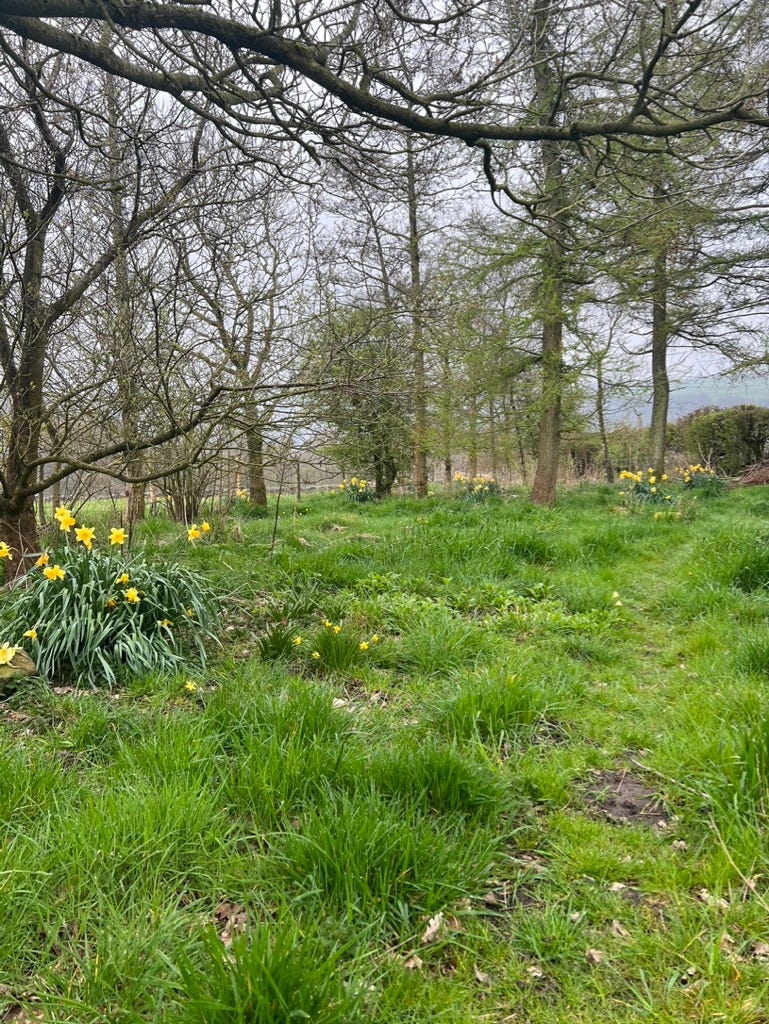
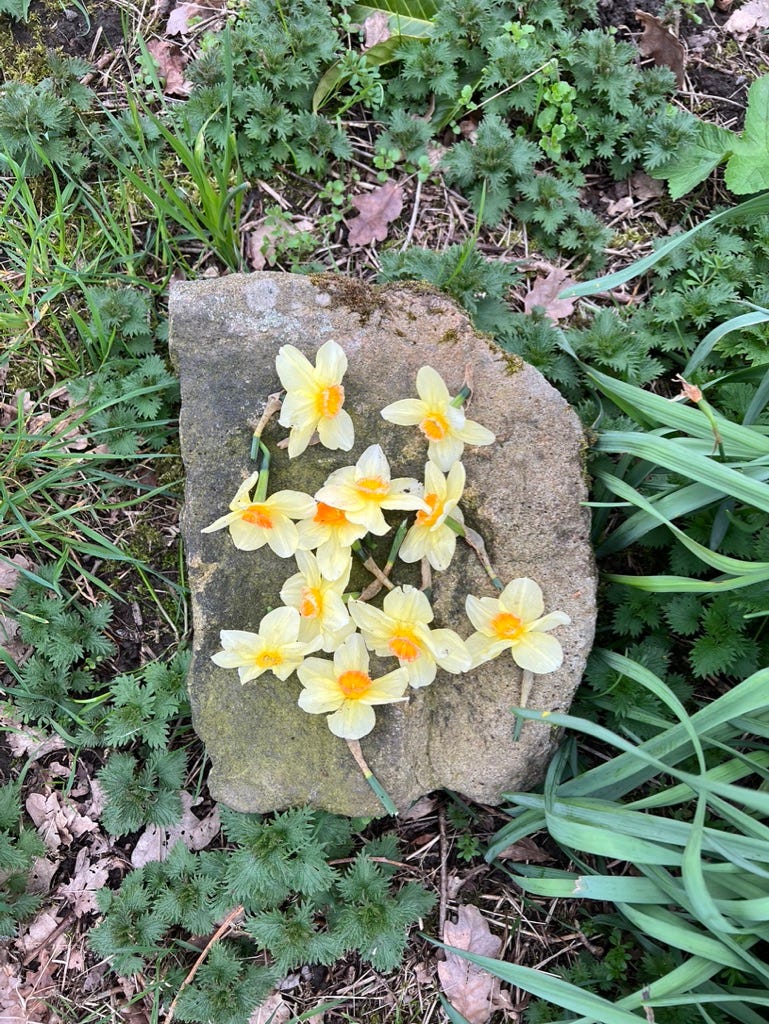
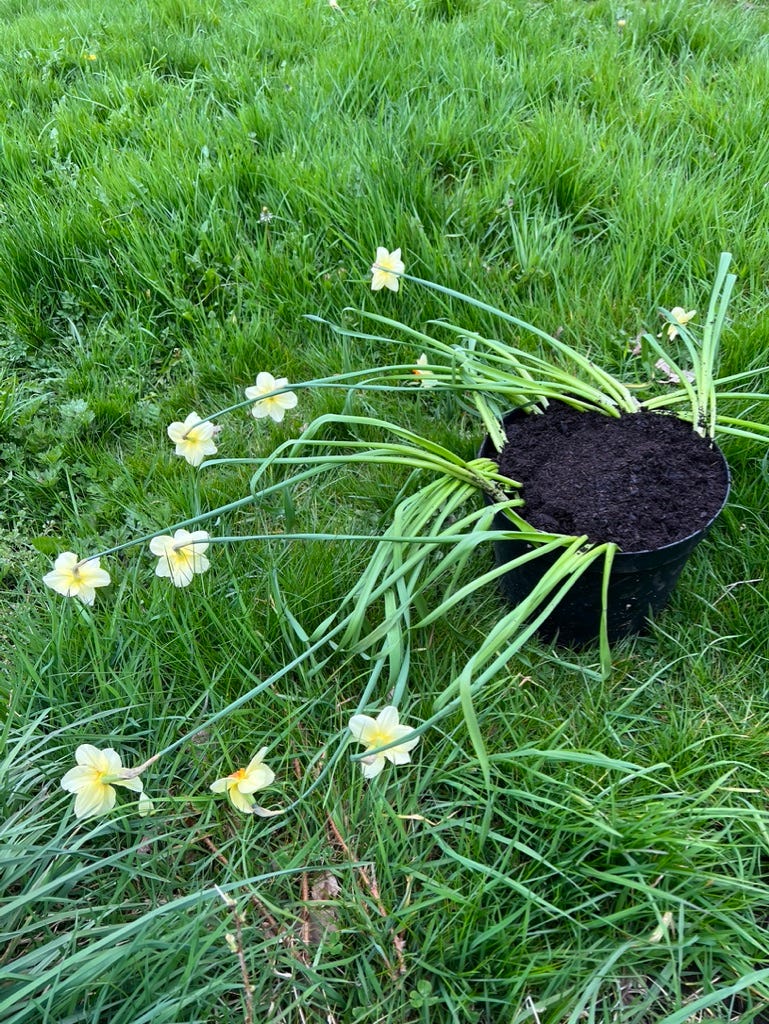

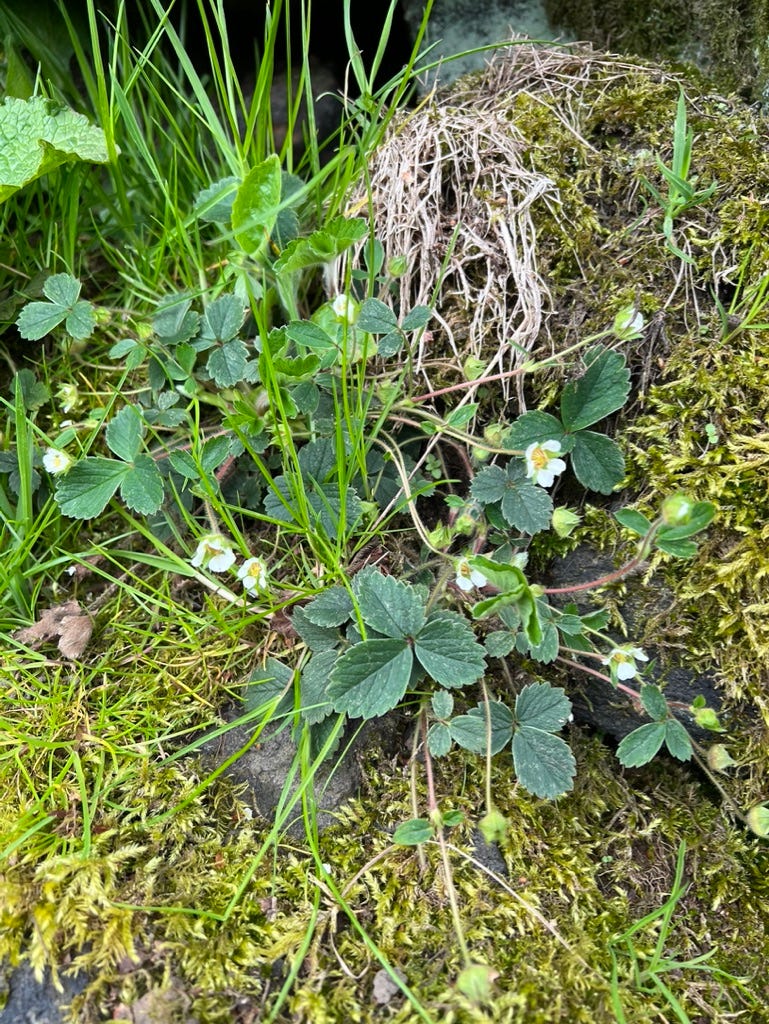
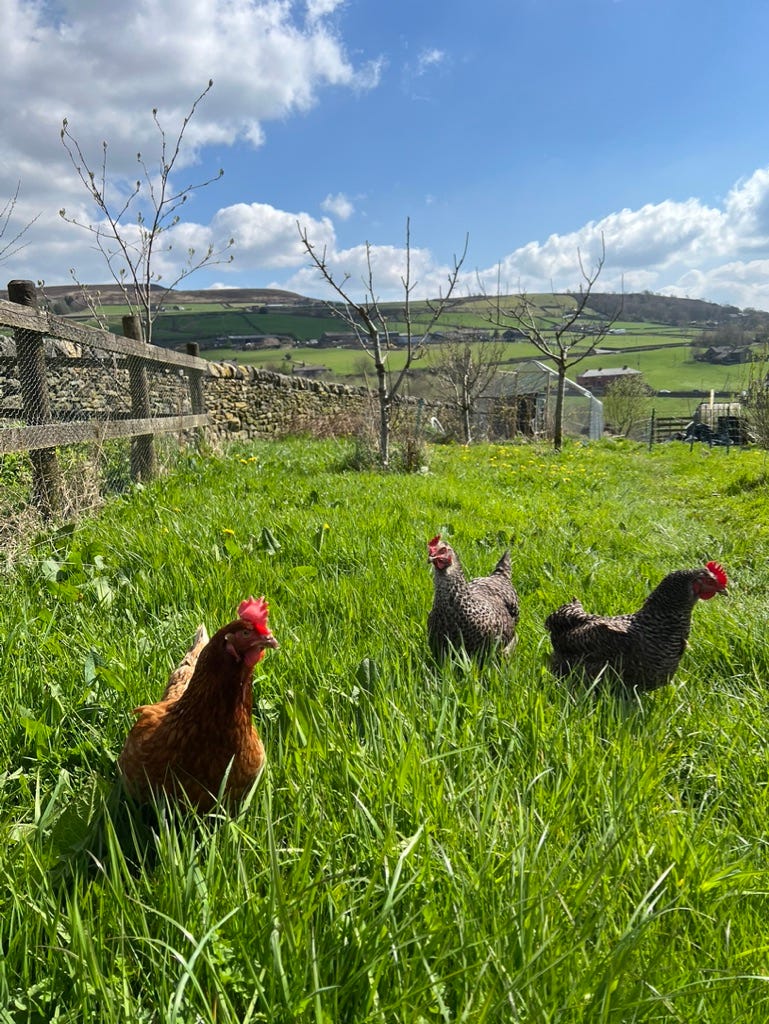

Interesting info re Guttation. I'd never heard of it before. Not sure if I've ever seen it on any of my plants.
Thank you for the tips on cleaning rusty secateurs! I just found my pair rusted at the back of the shed and I’m thrilled I might not have to replace them now!